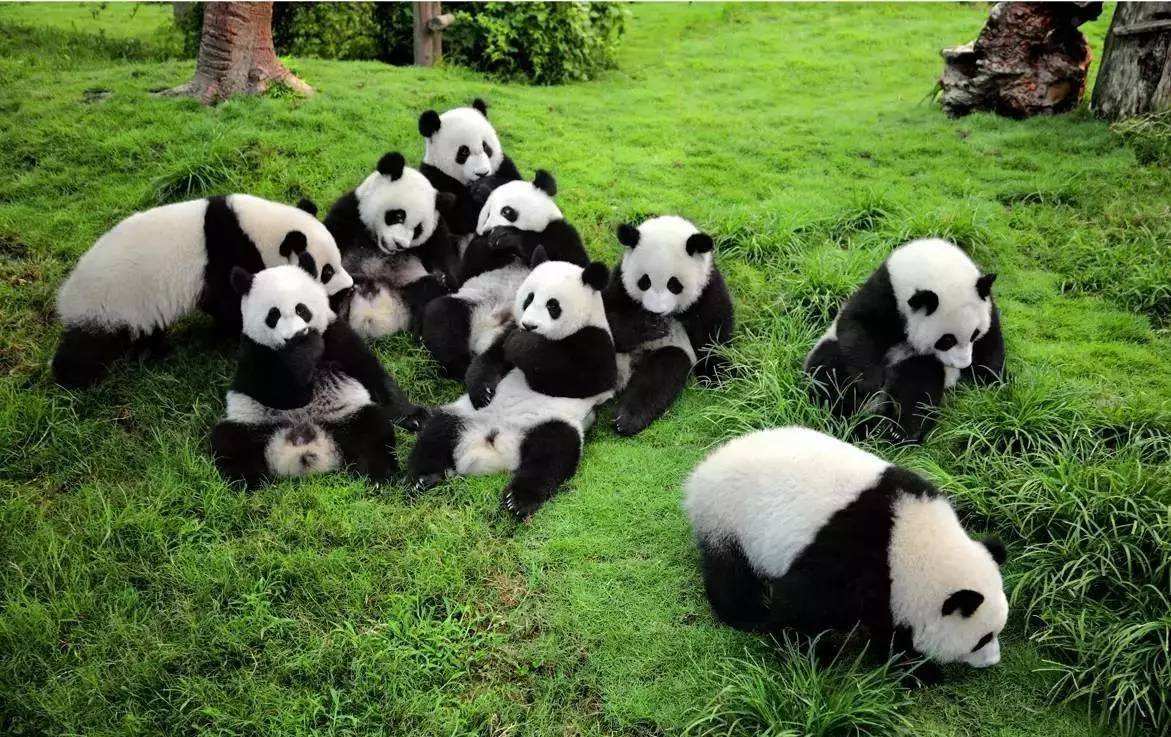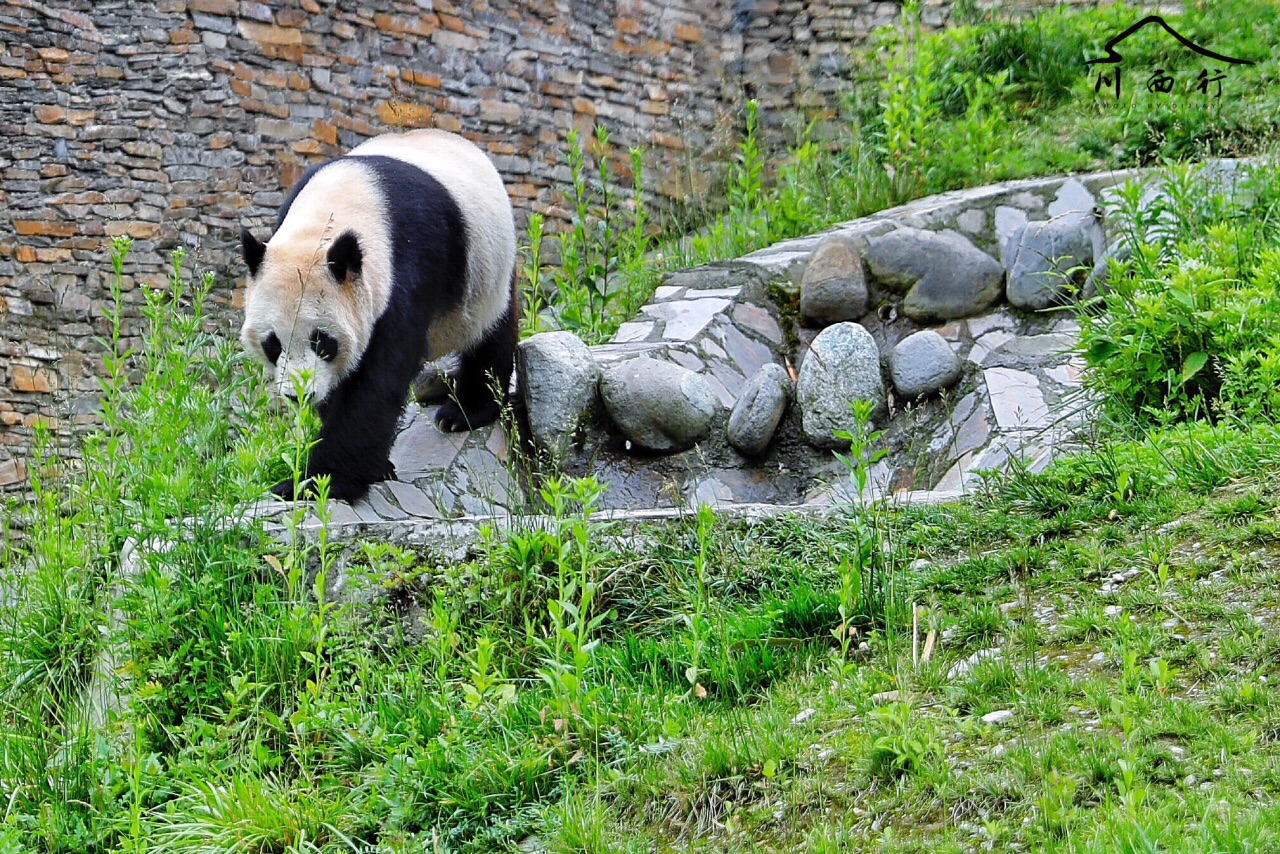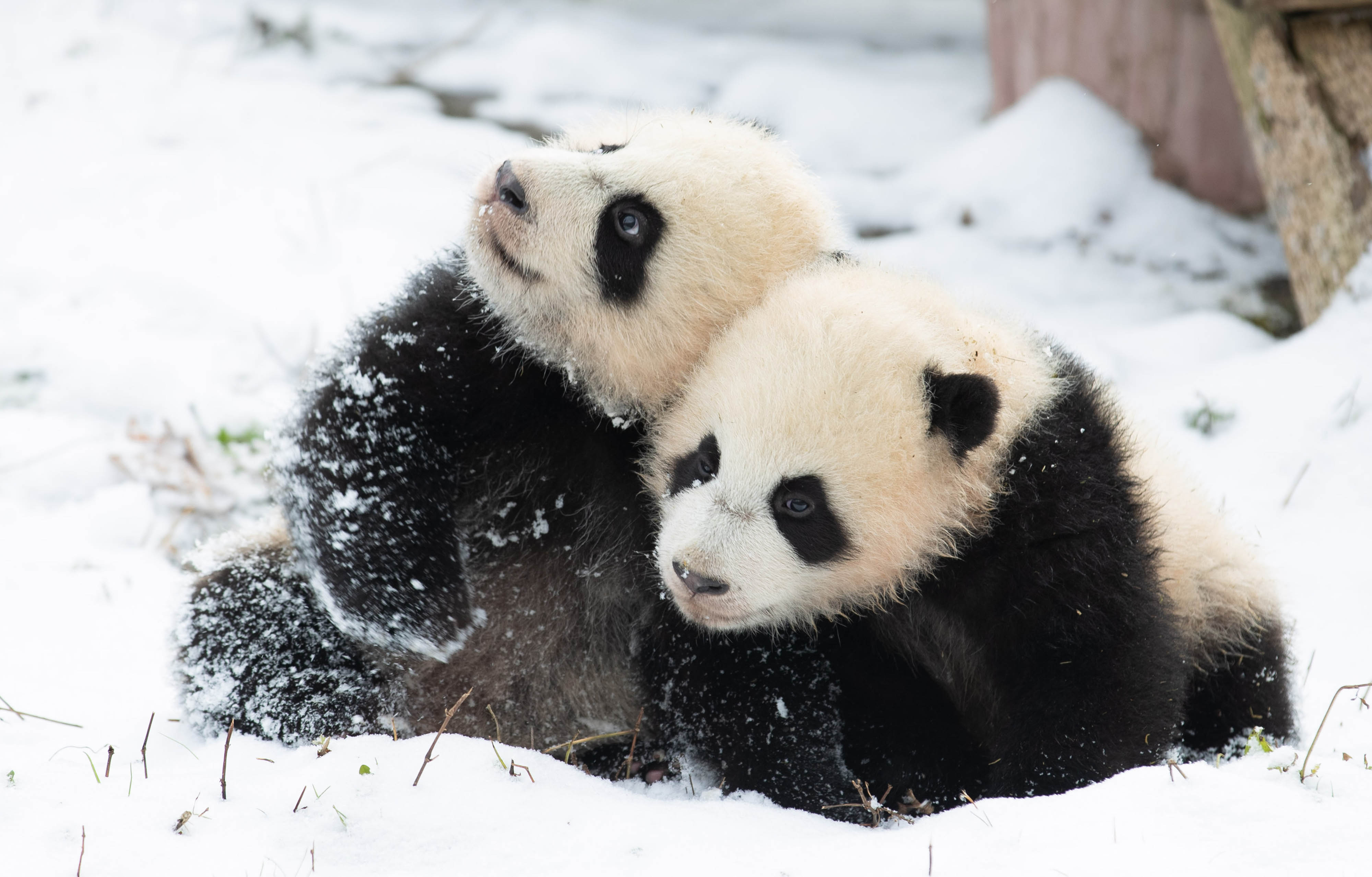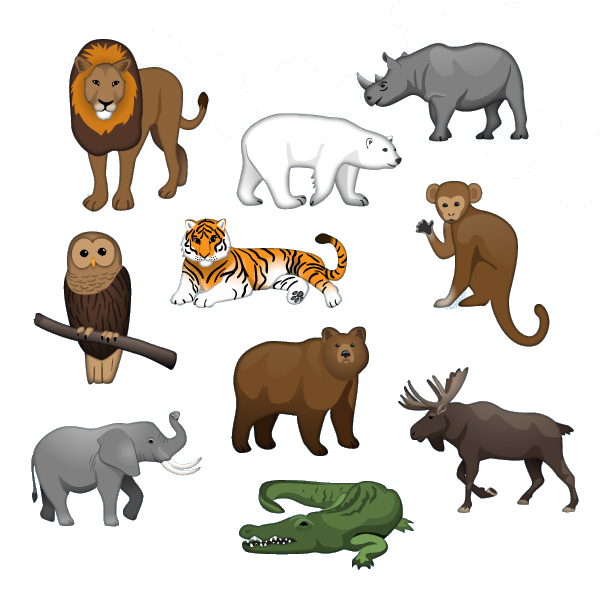

Das Wolong-Naturreservat erstreckt sich über 2000 Quadratkilometer Bergwald und wurde im Juni 1980 vor allem zum Schutz des Großen Pandas eingerichtet, von dessen gesamter Wildpopulation etwa 10 % hier leben. Der WWF stellte für die Einrichtung des Gebiets rund eine Million US-Dollar zur Verfügung.[1] Im Gebiet befindet sich auch eine Forschungs- und Zuchtstation für Große Pandas. Verschiedene Zuchtprogramme haben dort bis 2010 zur Geburt von 86 Panda-Jungen geführt.
Die Zerstörung der natürlichen Lebensräume im Reservat hält an und ist teilweise sogar höher als in angrenzenden Gebieten außerhalb des Schutzgebietes.[2]
Zur Tierwelt des Schutzgebiets gehören neben den Großen Pandas auch Leoparden, Rothunde und kleinere Raubtiere, wie Asiatische Goldkatzen, Katzenbären, Schweinsdachse und Buntmarder. Die Huftiere sind durch Sichuan-Takine, Wildschweine, Moschustiere, Seraue, Gorale, Schopfhirsche und Sambarhirsche vertreten. In den Wipfeln leben Goldstumpfnasen und Flughörnchen (Trogopterus xanthipes), am Boden leben Bambusratten und Stachelschweine.[3] Durch die Temperaturunterschiede, die sich aus den unterschiedlichen Höhenlagen ergeben, und die Lage in einem Übergangsgebiet treffen hier tropische Arten, wie Nebelparder und Sambarhirsche auf nördliche Tiere, wie Weißlippenhirsche, Schneeleoparden und Nordluchse.[4]
四川卧龙国家级自然保护区,是中华人民共和国始建于1963年的一处国家级自然保护区,与全国唯一的县级特别行政区四川省汶川卧龙特别行政区(简称卧龙特别行政区或卧龙特区,原称四川省汶川县卧龙特别行政区)的行政机构合署办公且管辖地域完全重合,位于中国四川省阿坝藏族羌族自治州汶川县西南部,邛崃山脉东南坡,覆盖面积约20万公顷,是大熊猫的主要栖息地之一。同时也是珍贵濒危植物、其它国家级重点保护濒危动物的栖息地。
1980年列入“人与生物圈”保护区网络,同年与世界野生动物基金会合作建立中国保护大熊猫研究中心,也是2006年中国政府向联合国教科文组织申报的世界自然遗产选址之一,结果以四川大熊猫栖息地之名义登入。
经国务院批准,四川省汶川县卧龙特别行政区成立于1983年3月。 1983年7月,四川省人民政府、中华人民共和国林业部决定改其名为四川省汶川卧龙特别行政区,实行与卧龙自然保护区管理局合署办公的管理体制。卧龙特别行政区是中国四川省的一个特殊政区,现有人口5343人,由卧龙镇和耿达乡(行政区划属汶川县)组成,隶属于四川省人民政府,但实际管理则是由四川省林业厅[2]负责。卧龙特别行政区的辖区与自然保护区完全重合,是中华人民共和国境内唯一的一个县级特别行政区。四川省汶川卧龙特别行政区的辖区与四川卧龙国家级自然保护区完全重合,并与国家林业局卧龙自然保护区管理局合署办公。
Wolong National Nature Reserve (simplified Chinese: 卧龙自然保护区; traditional Chinese: 臥龍自然保護區; pinyin: Wòlóng Zìránbǎohùqū) is a protected area located in Wenchuan County, Sichuan Province, People's Republic of China. Established in 1963 with an initial size of about 20,000 hectares, the reserve was further expanded in 1975, covering an area of about 200,000 hectares in the Qionglai Mountains region. There are over 4,000 different species recorded in the reserve.[2] According to China's Third National Giant Panda Survey, Wolong National Nature Reserve houses about 150 wild individuals of highly endangered giant pandas. The reserve is also a home to many other endangered species including: snow leopards, red pandas, golden monkeys, white-lipped deer and many precious plants. Before the devastating 2008 Wenchuan earthquake Wolong got up to 200,000 visitors every year.[3][4] Its area is superseded by the Wolong Special Administrative Region.
La réserve naturelle nationale de Wolong, située dans le Xian de Wenchuan placé sous la juridiction de la préfecture autonome tibétaine et qiang d'Aba, à 130 km de Chengdu, capitale de la province du Sichuan en République populaire de Chine.
La réserve naturelle de Wolong a été fondée en 1963 avant de devenir une réserve de biosphère en 19791. Elle est connue pour son Centre de recherche des pandas géants de Wolong, qui dirige la reproduction et la protection des pandas géants. Elle couvre une superficie d'environ 7 000 km2. Le site abrite environ 300 pandas géants, la moitié d'entre eux est à l'état sauvage, alors que l'on ne recense, en 2007, qu'environ 1 600 pandas géants dans le monde.
En 2004, la réserve et différents centres de recherche ont été couverts par un réseau de télécommunication sans fil qui permet de suivre jour et nuit l'activité des pandas. Cette avancée technique est d'un grand secours pour les chercheurs qui peuvent ainsi éviter de nombreux déplacements et assurer une surveillance discrète des animaux. La réserve a été ajoutée à la liste du patrimoine mondial de l'UNESCO le 12 juillet 20062.
La chasse au panda géant, l'une des espèces les plus menacées au monde, a été interdite officiellement en 1962 en Chine. Wolong a donc été fondée dès 1963, et est devenue la plus grande réserve de pandas géants parmi les 31 de ce type en Chine avec 200 000 hectares consacrés aux animaux. Elle abrite en 2006 154 pandas géants sauvages, soit 10 % du total du pays.
La riserva naturale nazionale di Wolong è un'area protetta situata nello Xian di Wenchuan, posta sotto la giurisdizione della prefettura autonoma tibetana e qiang di Aba, a 130 km da Chengdu, capitale della provincia del Sichuan, nella Repubblica popolare cinese.
La riserva naturale di Wolong venne fondata nel 1963 e nel 1979 venne dichiarata riserva della biosfera[1]. È conosciuta per il suo centro di ricerca sui panda giganti, che gestisce la riproduzione e la protezione degli stessi. Ricopre una superficie di circa 2000 km². Il sito ospita circa 300 panda giganti, metà dei quali vive libera in natura; a dimostrazione della sua importanza, basta ricordare che nel 2007 rimanevano solamente 1600 panda giganti in tutto il mondo.
Nel 2004, la riserva e vari centri di ricerca sono stati coperti da una rete di telecomunicazione senza fili che permette di sorvegliare giorno e notte l'attività dei panda. Questa tecnologia avanzata è di grande aiuto per i ricercatori (che possono così evitare di spostarsi frequentemente), garantendo una sorveglianza discreta degli animali. La riserva è stata inserita nella lista dei patrimoni dell'umanità dell'UNESCO il 12 luglio 2006[2].
La caccia al panda gigante, una delle specie più minacciate del mondo, è stata vietata ufficialmente in Cina nel 1962. Wolong è stata fondata nel 1963, ed è divenuta la più grande riserva di panda giganti tra le 31 di questo genere che esistono in Cina, con 200.000 ettari riservati agli animali. Essa ospitava nel 2006 154 panda giganti selvatici, vale a dire il 10% del totale.
La Reserva Natural Nacional Wolong (chino tradicional: 臥龍自然保護區, chino simplificado: 卧龙自然保护区, pinyin: Wòlóng Zìránbǎohùqū) es un área protegida ubicada en el condado Wenchuan, en la provincia de Sichuan en China. Fundada en 1963, la reserva cubre un área de unas 200.000 hectáreas en la región de las Montañas Qionglai. Existen 4.000 especies diferentes registradas en la reserva.1 Alberga a más de 150 pandas gigantes, una especie altamente amenazada. La reserva es también hogar de muchas otras especies en peligro, incluyendo pandas rojos, langures ñatos dorados, ciervos de hocico blanco y una gran diversidad de plantas. Wolong recibe 100.000 visitantes al año.2
Вэньчуань-Улун (кит. 卧龙自然保护区) — национальный природный заповедник находящийся в уезде Вэньчуань Нгава-Тибетско-Цянского автономного округа китайской провинции Сычуань, входит в состав комплекса охраняемых природных территорий «Резерваты большой панды». Создан в 1963 году, занимаемая площадь: около 200 тысяч гектар. На территории резервата в общей сложности обитает более 4000 биологический видов.









 Geography
Geography



